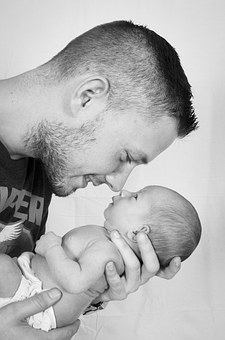Keep Your Children Active By Protecting Their Feet

Imagine how many miles you will walk in a lifetime and how much you use your feet every day
. Then imagine what you would do if your feet were damaged or malformed. Even something as simple as socks that are too tight could damage your child's feet at a young age. Children's feet, just like the rest of their body, are delicate and precious from the moment they are born. Many people do not realize it, but babies' feet do not have any bones at birth. Instead, they are made up of a soft cartilage, which is extremely vulnerable to damage from the outside world.Something as simple as a badly fitted shoe can cause untold damage to your baby's feet. Every parent knows that children are constantly growing and will always spend money on new clothes, shoes and trainers. It can take up to 18 years for children to properly form into the adult feet they will use for the rest of their lives. There are simple steps to caring for your children's feet, which can make all the difference. These tips will help their feet grow properly-giving them the support and protection they need for healthy feet in the future.
Your Newborn's Feet
Your baby's new feet may be blue, wrinkled, and peeling like much of the rest of his or her body. However, their feet will pink-up and fill out as soon as they get warm. A baby's feet may normally appear flat because they are born with a pad of fat in the arch area. Their foot and leg muscles are also not developed enough to support their arches when they first begin to stand. The arch typically does not become apparent until the age of 2 .
At the time of your child's birth, your doctor will look for obvious abnormalities of your baby's feet and legs. They will check his or her hips to make sure they are not dislocated, tickle the bottom of their foot to check for appropriate neurological response, and will count the toes on their feet to assure there are indeed ten toes.
It's Time to Walk
Before your baby takes their first step, it is important for them to develop adequate strength in their legs to carry their body weight. It is also important for him or her to gain the confidence to stand on his or her own two feet. While many parents look toward the first birthday as the target for this major milestone, the average age when children begin to walk is closer to 15 months. Many babies will "cruise" by walking while holding onto furniture or toys for many months before actually taking those first real steps. When children do walk on his or her own, their feet tend to spread out farther than adults' feet to give them more stability, and they may even begin to walk on their toes. This is normal at the beginning, but if your child is still walking on his or her toes after a few months, make an appointment with a podiatrist who may test him or her for a tight Achilles tendon or a contracted muscle.
Pick Shoes Carefully
When it comes to buying shoes for your baby, it may often be difficult to resist the temptation to put cute little shoes on your baby as it can pose as an obstruction to their growing feet. Shoes that are too restrictive don't allow for normal toe and foot motion. Stick to non-restrictive socks and crib shoes-soft, flexible leather booties. Save the sturdy, adult-like shoes for special dress-up photos. Even when children are learning to walk, shoes may only be necessary for protection from slippery floors, a splintery deck, or the ground outside. Otherwise, let your child walk barefoot or with non-skid socks and booties to allow him or her to grip the floor and their feet to balance better.
Talk to your New York City podiatrist for more information on how to care for your child's feet as they age to ensure their feet are healthy for a lifetime.
by: Gen Wright How Can I Help Kids Through My Florida Divorce? How To Treat Allergy In Children How To Take Care Of Heartburn In Children Types Of Discipline For Children Dealing With Hemorrhoids In Children Four Key Aspects To Consider Before Buying Childrens Beds Teach Children Scriptures In A Fun Way Outdoor Toys For Children Are Fun Know The Reasons Why You Need To Buy Your Kids Bunk Beds Local School Thanks Redditch Company For Helping Children With Interview Practice How Are Children Portrait The Located Skidsteer Lexan Cab Enclosures Choosing Soft Toys For Your Kid